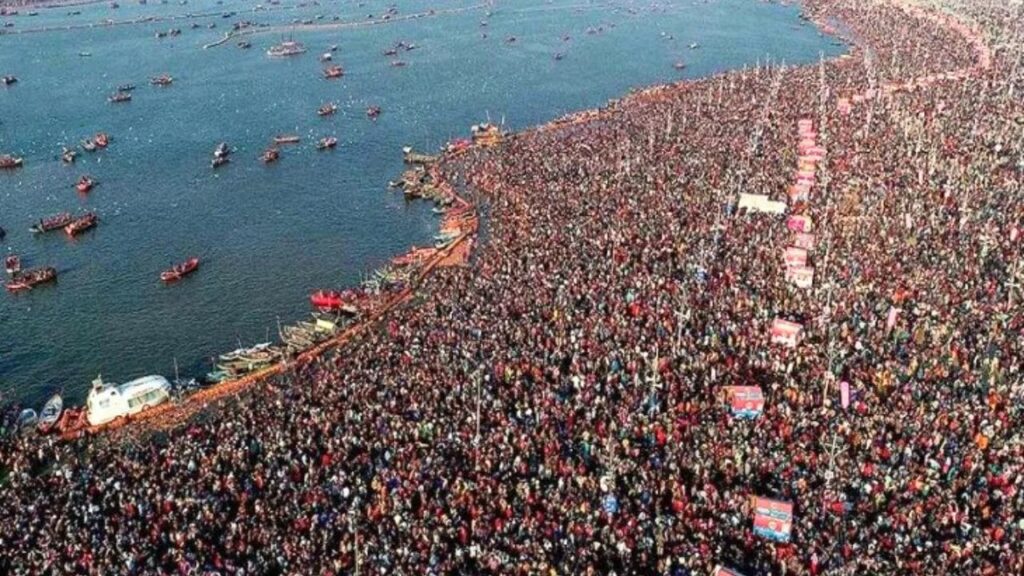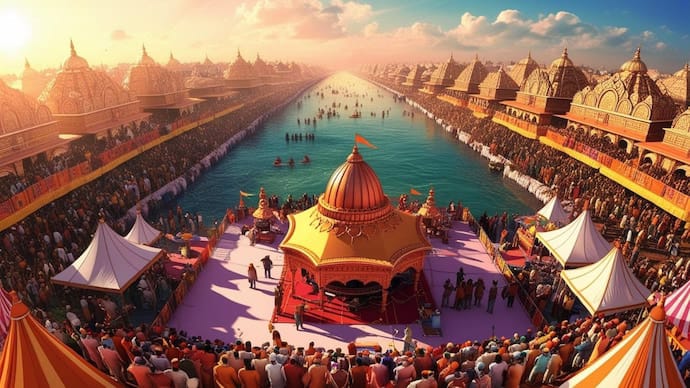The Maha Kumbh Mela of 2025, currently underway in Prayagraj, India, is a significant event for several reasons:
Rare Occurrence: This year’s festival is particularly special as the Maha Kumbh Mela, or “Grand Kumbh Mela,” occurs once every 144 years, marking the 12th Kumbh Mela cycle. This rare alignment makes the 2025 gathering especially auspicious for participants.
Massive Participation: The event is expected to attract over 400 million devotees over its six-week duration, making it the world’s largest religious gathering. Pilgrims from across India and the globe converge at the confluence of the Ganges, Yamuna, and the mythical Saraswati rivers to perform ritual baths believed to cleanse sins and lead to salvation.

The Mahakumbh Mela is one of the biggest and most Holy strict social affairs on the planet, celebrated by Hindus. It is held like clockwork at one of four journey locales in India: Haridwar, Prayagraj (Allahabad), Ujjain, and Nasik, in pivot. This great occasion is an honest conversion, otherworldliness, and custom, drawing in large number of pioneers from across the globe. Here’s beginning and end you want to be aware of the Mahakumbh:
Authentic Importance
The Mahakumbh has its underlying foundations in Hindu folklore. It is accepted to remember the agitating of the expanse of milk (Samudra Manthan) by divine beings (devas) and devils (asuras) to get the nectar of eternality (Amrita). According to the legend, during the fight for the nectar, a couple of drops fell at four spots: Haridwar, Prayagraj, Ujjain, and Nasik. These spots are presently the areas of the Kumbh Mela.
Kinds of Kumbh Melas
- Purna Kumbh Mela: Held like clockwork at every one of the four areas.
- Ardh Kumbh Mela: Held at regular intervals at Haridwar and Prayagraj.
- Maha Kumbh Mela: Happens at regular intervals at Prayagraj.
- Kumbh Mela: More limited size social occasions are held every year or at explicit spans.
Key Customs
- Shahi Snan (Imperial Shower): This is the main custom, where fans and sadhus (monks) wash in the consecrated waterways to scrub their wrongdoings and accomplish freedom (moksha).
- Supplications and Pujas: Lovers offer petitions, take part in strict talks, and perform services.
- Social Get-togethers: Otherworldly pioneers, researchers, and aficionados participate in conversations, singing, and recitation of sacred writings.

Plan
The planning of the Mahakumbh is resolved in light of the visionary places of Jupiter, the Sun, and the Moon. Explicit planetary arrangements choose the scene and dates.
Key Areas and Streams
- Haridwar: Ganga Stream.
- Prayagraj (Allahabad): Conjunction of Ganga, Yamuna, and the legendary Saraswati.
- Ujjain: Kshipra Stream.
- Nasik: Godavari Stream.
Significant Features
Naga Sadhus: Known for their severe ways of life, these bare monks are a significant fascination.
Profound Congregations: Talks by holy people, akharas (devout orders), and strict associations.
Social Exhibitions: Music, dance, and conventional customs add a merry component.
Importance for Fans
- Otherworldly Purifying: Washing in the sacrosanct waterways is accepted to purge sins.
- Way to Freedom: Investment is viewed as a stage toward salvation (moksha).
- Aggregate Confidence: It’s a festival of solidarity and dedication in Hinduism.
Group and Foundation
The Mahakumbh draws in huge number of lovers, including commoners, holy people, and global sightseers. The public authority and nearby specialists set up brief foundation, including tents, sterilization, clinical camps, and security courses of action.
Thanks
Vijay Raj Gurjar


2 comments
Thanks for Great information
🙏